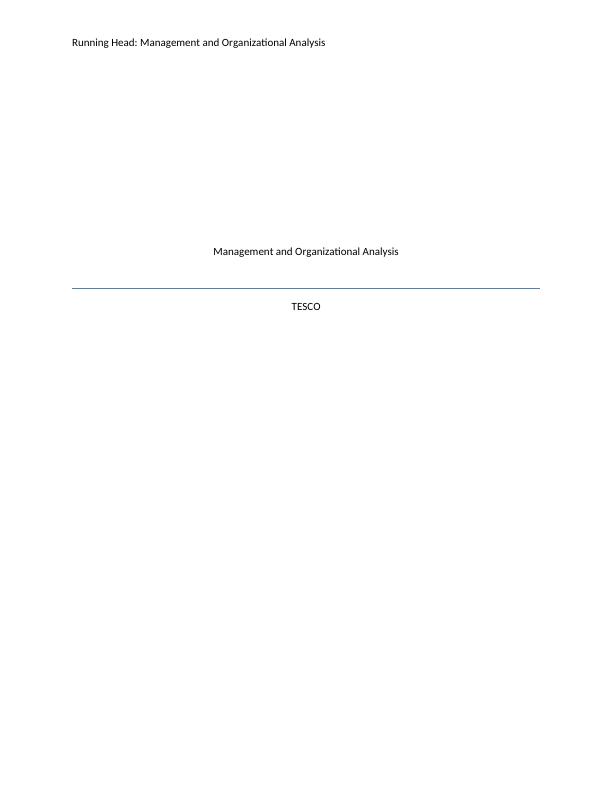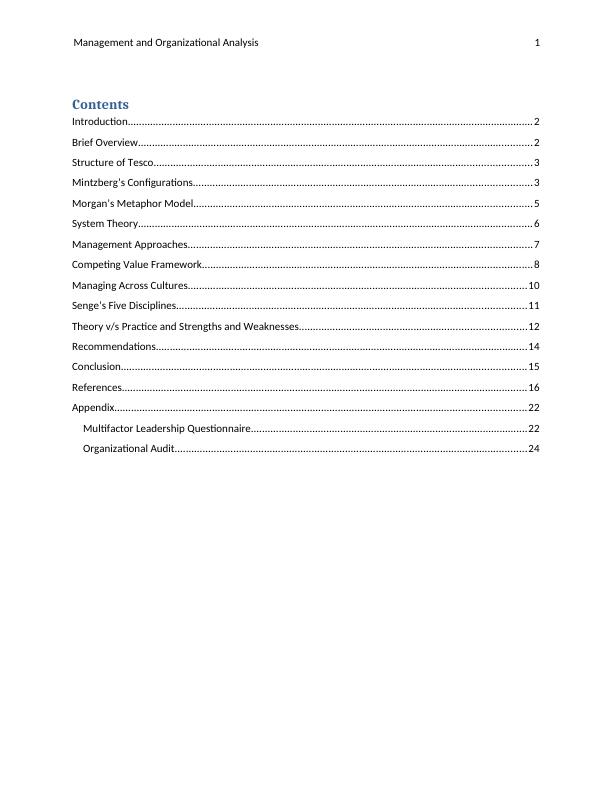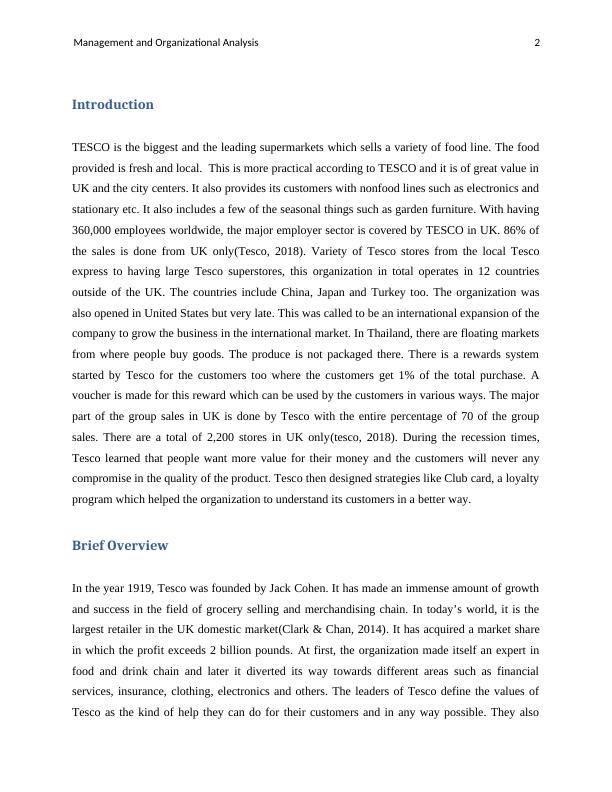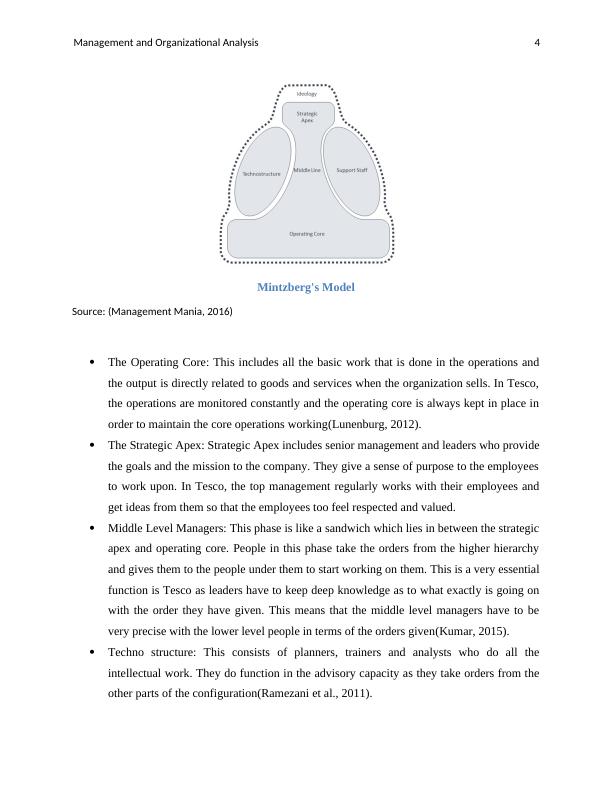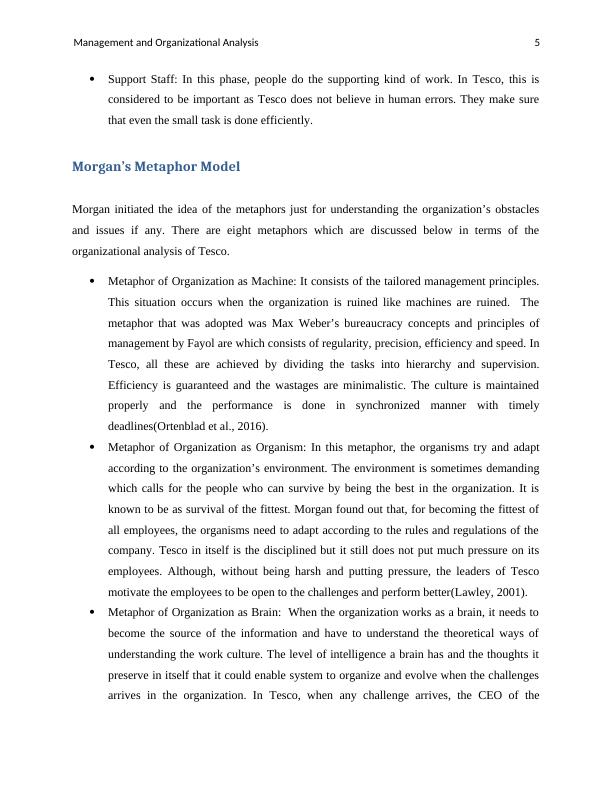Management and Organizational Analysis of Tesco
Brief outline of chosen organizations, their development and growth, products or services offered, introduction to organization and management analysis against contemporary challenges, critical analysis of organizational structure, analysis of management approaches within frameworks, analysis and discussion on concepts and relevance of management and leadership, motivation, teamwork
Added on 2023-06-14
About This Document
Management and Organizational Analysis of Tesco
Brief outline of chosen organizations, their development and growth, products or services offered, introduction to organization and management analysis against contemporary challenges, critical analysis of organizational structure, analysis of management approaches within frameworks, analysis and discussion on concepts and relevance of management and leadership, motivation, teamwork
Added on 2023-06-14
End of preview
Want to access all the pages? Upload your documents or become a member.

